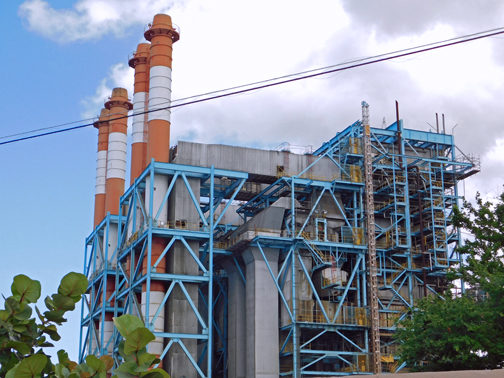Study: Puerto Rico could achieve 75% renewable energy use in 15 yrs.

Investing $9.6 billion in distributed solar panels and batteries — funds that are already available from the federal government — could transform Puerto Rico’s electrical system into a resilient grid that provides every home on the island with a clean, reliable source of energy, according to a report.
The report by Puerto Rico organization Cambio and the Institute for Energy Economics and Financial Analysis (IEEFA) summarizes grid modeling studies commissioned by Cambio to evaluate the cost and operation of the grid under increasingly higher amounts of distributed renewable energy.
The report found Puerto Rico could cost-effectively and reliably generate 75% of its total electricity from renewables within 15 years. It would include resiliency in the form of rooftop solar and battery storage for every home on the island.
Adopting the plan advocated by the Puerto Rican labor-environmental alliance “We want Sun” would mean the island wouldn’t need to invest in new fossil fuel power plants or convert existing plants to natural gas.
At least one major coal- and two oil-fired plants could be retired, reducing Puerto Rico’s fossil fuel costs from the current $1.4 billion to $430 million. The change would also benefit customers, knocking electricity prices from the current 21 cents per kilowatt-hour (kWh) to less than 15 cents/kWh if the federal funds are used, the study stated.
“The study shows that there’s no need to use public funds for new fossil fuel projects or conversion of existing plants to natural gas,” said Ingrid Vila-Biaggi, president of Cambio.
“PREPA should start now with investing $9.65 billion in available federal funds to install rooftop solar and storage systems,” she said, noting that there are a potential 1 million structures in Puerto Rico that could be outfitted with solar panels and batteries to replace dependency on the current grid.
The Puerto Rico Electric Power Authority (PREPA) has announced plans to spend $8.4 billion in federal funds over the next decade to rebuild the island’s centralized transmission and distribution system, battered by a major hurricane and series of earthquakes.
It would spend another $853 million on natural gas infrastructure — but nothing on renewable energy.
“A transformation to energy self-sufficiency would allow for stable, lower prices with less investment in transmission and distribution than PREPA has proposed,” said Cathy Kunkel, an IEEFA energy finance analyst. “Renewable energy investments would stabilize rates by reducing dependence on volatile fossil fuel prices.”
The study developed an electrical system model to provide a detailed technical and economic evaluation of a sustainable energy portfolio dramatically different from that which currently exists. The modeling shows the behavior of a grid that integrates a large quantity of distributed renewable energy, prioritizing rooftop solar and storage.
This allowed an understanding of the opportunities and the transmission and distribution system operational challenges associated with the integration of distributed renewables and to propose corrective measures.
“PREPA has never modeled the electric distribution system for the entire island in this way,” stated Dr. Agustin Irizarry, project advisor.
“This project recreated 89% of the distribution system, including Vieques and Culebra, which permitted modeling the operation of a system that generates the majority of electricity from rooftop solar on homes and businesses,” he explained.
The capital investment required by this plan is $5 billion less than in the Integrated Resource Plan proposed by PREPA, and the proposal would result in a system that saves $500 million a year relative to the current system, the study showed.
In its 10-year infrastructure plan, PREPA proposes to spend $8.4 billion in federal funds for its transmission and distribution systems and an additional $853 million on natural gas infrastructure.
In contrast, based on the modeling of the “We want Sun” proposal, $650 million could be spent on distribution system improvements and $9 billion could be invested in rooftop distributed energy across the island. An additional $1.9 billion in federal funds is expected from HUD for the energy sector which could also be used for distributed renewable deployment and storage.
The study’s findings have been presented to PREPA and to the Puerto Rico Energy Bureau.











